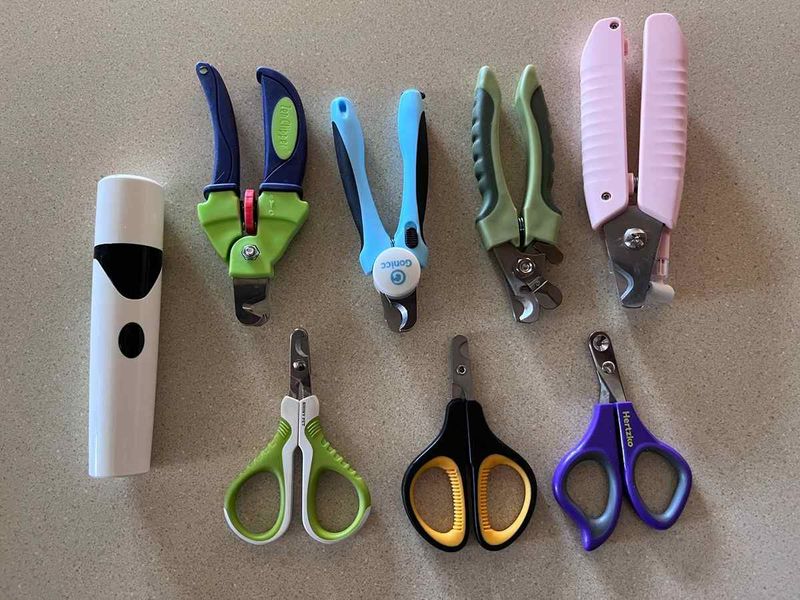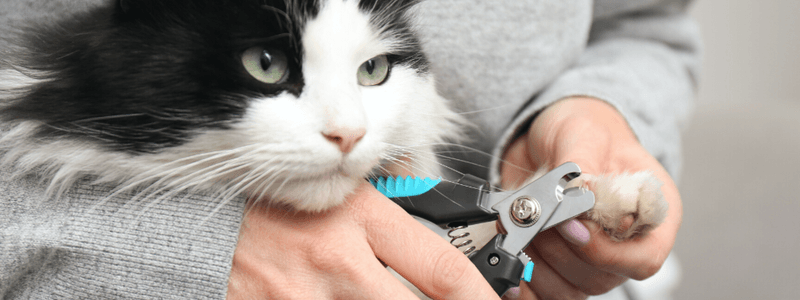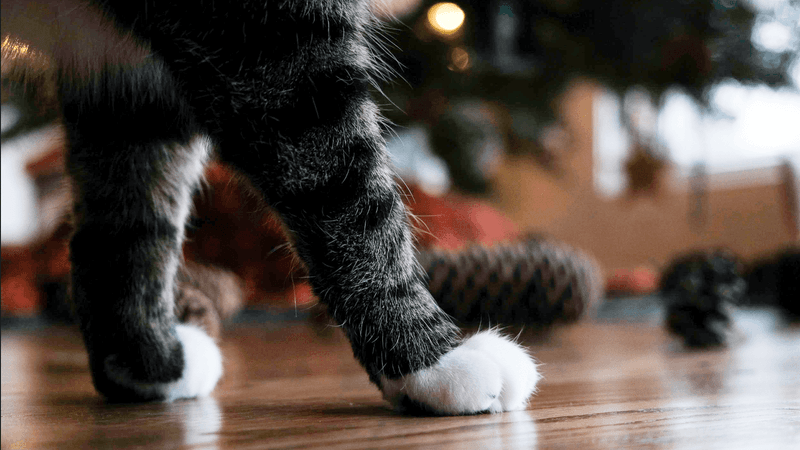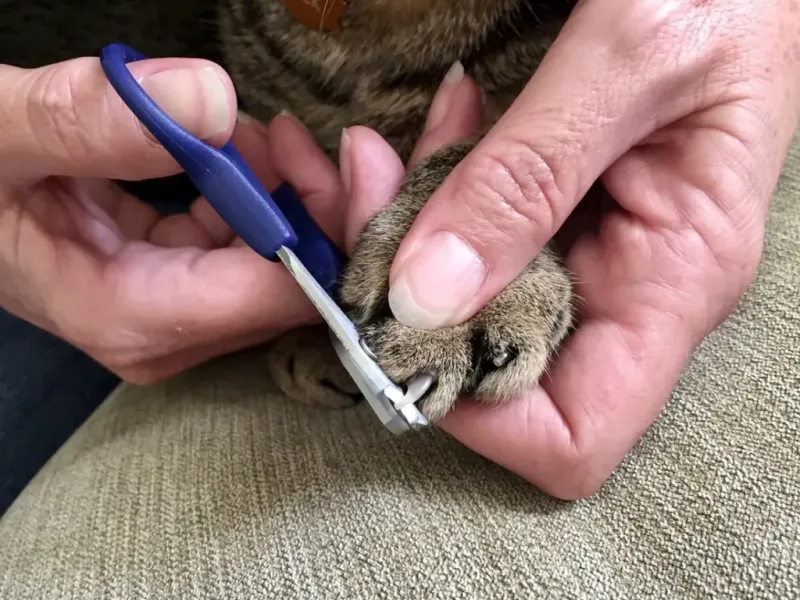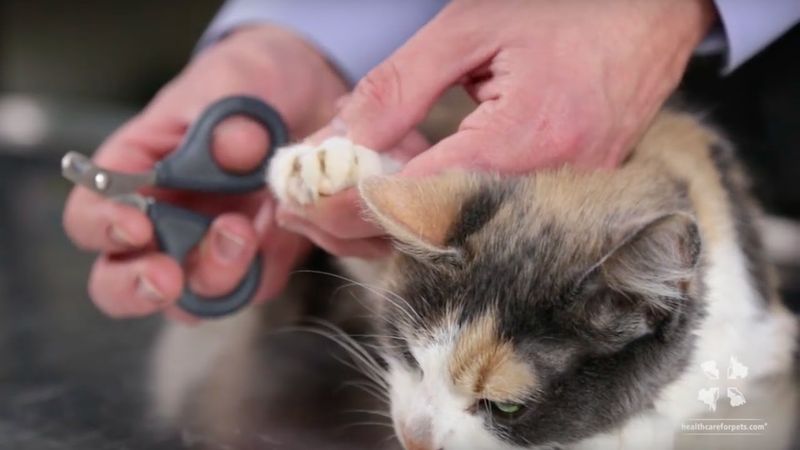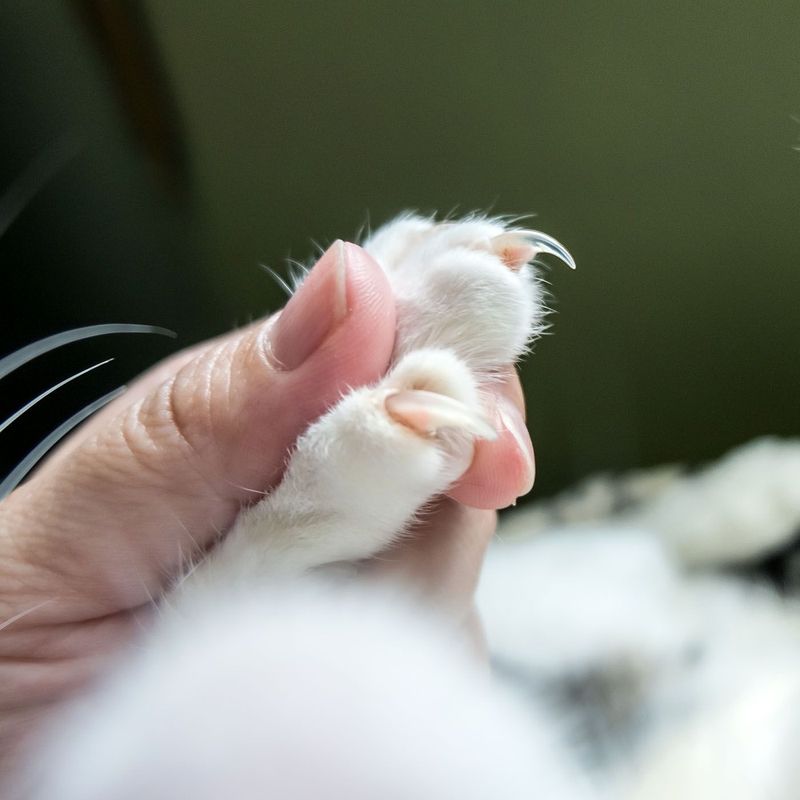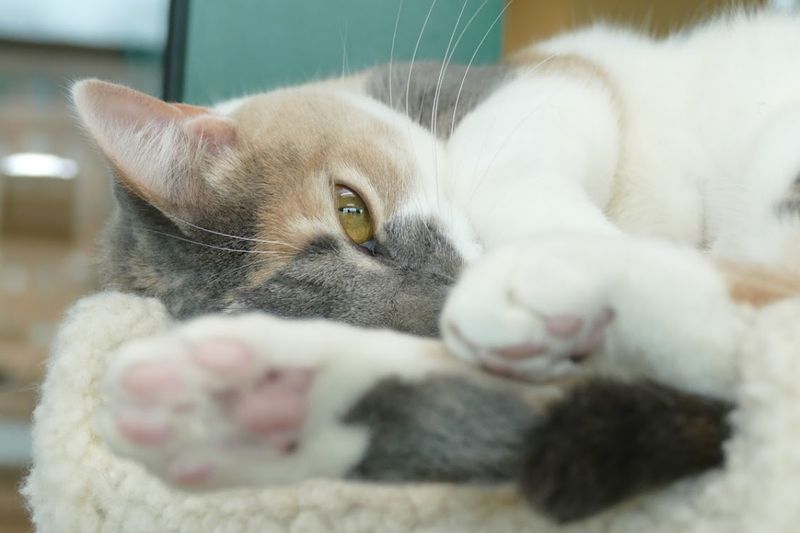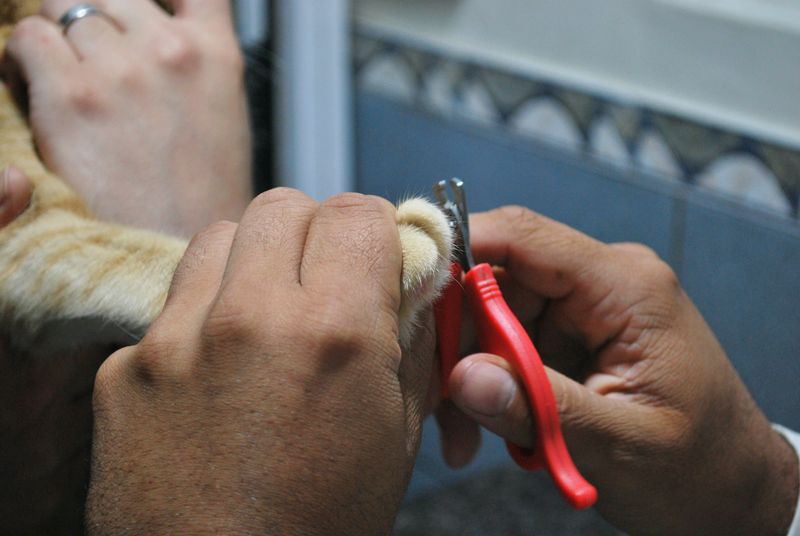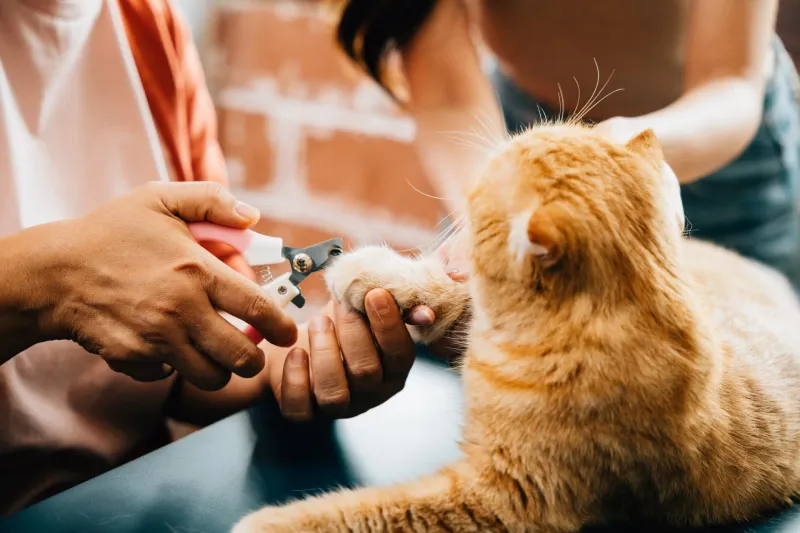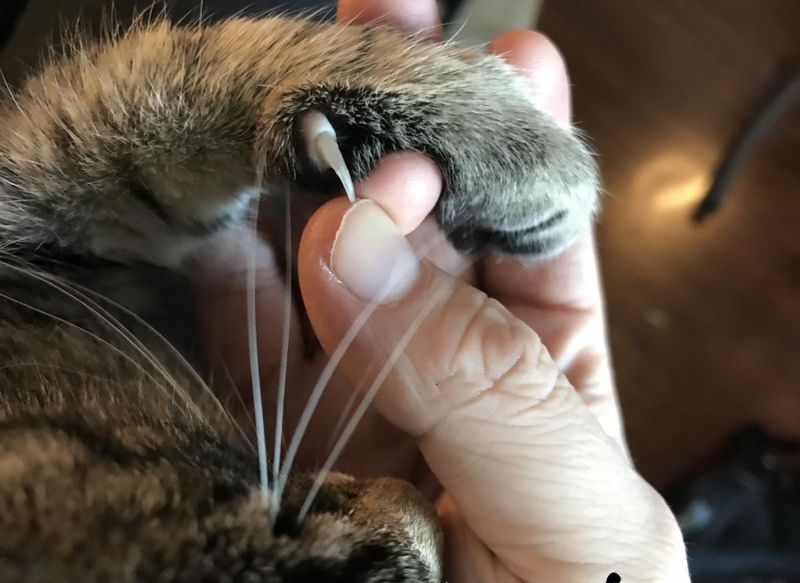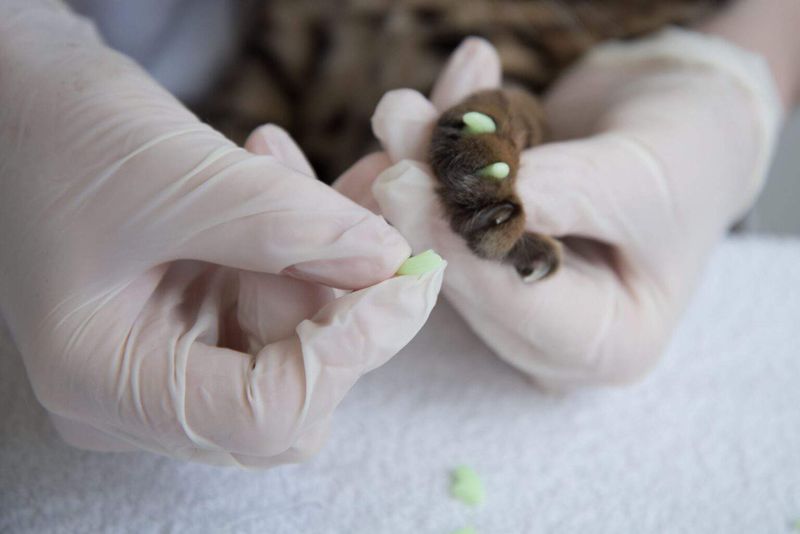📖 Table of Content:
- 1. Prepare Your Tools
- 2. Choose the Right Time
- 3. Familiarize Your Cat With Their Paws
- 4. Create a Calm Space
- 5. Use Proper Restraint Techniques
- 6. Start With a Single Nail
- 7. Focus on the Quick
- 8. Trim Gradually
- 9. Keep Your Movements Steady
- 10. Reward and Praise
- 11. Take Breaks if Needed
- 12. Enlist a Helper
- 13. Stay Observant
- 14. Practice Regularly
- 15. Consult Your Veterinarian
Trimming your cat’s nails at home might seem overwhelming at first, but with the right approach, it can become a manageable and even enjoyable routine. By using expert-approved methods, you can ensure your feline friend remains calm and comfortable throughout the process. Begin by preparing your tools and getting your cat accustomed to gentle paw handling. A relaxed environment and a steady pace help create a positive grooming experience.
With careful planning and proper techniques, the task transforms into a stress-free activity for both of you. Establish a quiet, distraction-free space where your cat feels safe, and use gentle restraint if needed. Starting with a single nail and gradually increasing the number trimmed builds trust over time. Consistent use of treats and praise reinforces positive behavior and helps your cat associate nail trimming with pleasant rewards.
Following these expert-approved tips, you can master the art of safely trimming your cat’s nails at home. Each recommendation is designed to ensure the process is both safe and effective, keeping your pet at ease. With patience and regular practice, nail trimming becomes a bonding experience rather than a challenge. A calm and methodical approach leads to a happier, healthier cat and a more confident pet owner.
1. Prepare Your Tools
Before you begin trimming your cat’s nails, ensure you have all the necessary tools at hand. Gather quality cat nail clippers, which are specifically designed to cut through feline nails cleanly. Additionally, have a nail file ready to smooth any rough edges. It’s also wise to keep some styptic powder or cornstarch nearby; these can help stop any accidental bleeding. Preparing these tools in advance ensures you are ready for a smooth and efficient grooming session. This preparedness not only makes the process faster but also less stressful for both you and your cat.
2. Choose the Right Time
Timing is crucial when it comes to trimming your cat’s nails. Aim to schedule the trimming session when your cat is most relaxed, such as after they’ve had a meal or enjoyed some playtime. A calm environment significantly increases the chances of a successful nail trim. When your cat is sleepy or just finished playing, they are less likely to squirm or react aggressively. This timing allows for a more serene experience for both you and your pet. Remember, a relaxed cat is more cooperative, making the task at hand easier.
3. Familiarize Your Cat With Their Paws
To make nail trimming less stressful, start by familiarizing your cat with having their paws handled. Gently handle and massage your cat’s paws daily to create a positive association with touch. This practice, performed regularly, will make the nail trimming process significantly easier over time. By doing this, your cat becomes accustomed to the sensation and less likely to resist during actual trimming. Over time, your cat will associate this action as a form of affection rather than something to be wary of, helping to ease future grooming sessions.
4. Create a Calm Space
Providing a calm, quiet space for nail trimming is essential. Choose a serene area free from distractions, like a quiet room in your home. This peaceful setting helps your cat feel safe and reduces any anxiety they might feel during grooming. By opting for a clutter-free environment, you minimize any potential stressors that could agitate your pet. A calm space allows your focus to be solely on the task at hand, ensuring both you and your cat remain composed throughout the process. This preparation can lead to a successful and stress-free trimming session.
5. Use Proper Restraint Techniques
Knowing how to properly restrain your cat is crucial for a smooth nail trimming session. Secure your cat in your lap, or if necessary, wrap them securely in a soft towel. This gentle restraint helps minimize sudden movements and ensures both your safety and your cat’s. Proper restraint techniques are key to preventing potential injuries and maintaining control. By holding your cat comfortably, you create a reassuring environment where they feel supported. This approach not only protects you from scratches but also provides your cat with a sense of security, making them less likely to struggle.
6. Start With a Single Nail
When beginning to trim your cat’s nails, start with just one nail to gauge their reaction. This gradual approach allows you to assess how comfortable your cat is with the process. Begin by trimming one nail, then gradually increase the number of nails trimmed in one session as your cat becomes more relaxed. This step-by-step method can help desensitize your cat to the sensation of nail trimming. Over time, as your cat becomes more accustomed, you can increase the number of nails trimmed per session, building their tolerance and making the process smoother overall.
7. Focus on the Quick
It’s crucial to focus on avoiding the quick. The quick is the sensitive pink area found in lighter nails and contains nerves and blood vessels. Cutting into this part can cause pain and bleeding. For cats with dark nails, where the quick isn’t visible, trim only the curved tip to prevent injury. By being mindful of the quick, you ensure a safer trimming experience for your cat. This attention to detail not only prevents discomfort but also builds your confidence in handling your cat’s grooming needs.
8. Trim Gradually
Adopt a gradual approach when trimming your cat’s nails by taking small snips rather than cutting too much at once. This method reduces the chance of accidentally cutting into the quick and causing discomfort. By trimming a little at a time, you maintain control and minimize stress for both you and your cat. This approach is particularly beneficial for cats who are anxious or have had negative experiences in the past. Gradual trimming helps build your cat’s trust and allows you to become more familiar with their nail structure, making future sessions easier.
9. Keep Your Movements Steady
Maintaining steady movements during nail trimming is essential for a clean and safe cut. Hold the clippers confidently and ensure your hands are stable to avoid any mishaps. Steady, deliberate movements contribute to a safer trimming process, reducing the likelihood of injury. By confidently holding the clippers, you also help reassure your cat, who can sense your calm demeanor. This steadiness allows for precise cutting, ensuring a more efficient session. Practice and patience will improve your technique, resulting in a smoother, more successful trimming experience for both you and your feline friend.
10. Reward and Praise
Positive reinforcement is a powerful tool in making nail trimming a positive experience. Use treats and gentle praise during and after the session to reward your cat’s good behavior. This approach helps build trust and encourages your cat to remain calm in future grooming sessions. By associating nail trimming with positive outcomes, your cat becomes more cooperative over time. Incorporating rewards not only strengthens your bond with your pet but also makes the process more enjoyable for both of you. Remember, consistent praise and treats can transform nail trimming into a pleasant routine.
11. Take Breaks if Needed
It’s important to recognize when your cat needs a break during a nail trimming session. If your cat becomes stressed or agitated, pause and give them time to relax. Breaking the process into shorter sessions can help maintain a calm atmosphere and prevent negative associations with nail trimming. By being attentive to your cat’s body language, you can tailor the session to their comfort level. This patience demonstrates your commitment to their well-being and helps build their trust over time. Remember, a relaxed cat is more likely to cooperate willingly, making future sessions more successful.
12. Enlist a Helper
Having a second pair of hands can make a significant difference during nail trimming. Consider enlisting a friend or family member to gently hold your cat while you focus on trimming their nails. This additional support can provide extra reassurance for your cat and make the process smoother. By having a helper, you can concentrate on making precise cuts without worrying about restraining your cat. This teamwork approach fosters a sense of security for your pet and can enhance the overall experience. Enlisting help is especially beneficial for cats who are particularly anxious or squirmy.
13. Stay Observant
During the nail trimming process, it’s crucial to stay observant for any signs of discomfort or bleeding. Monitoring your cat’s reactions allows for quick detection of any issues, ensuring immediate care if needed. By staying vigilant, you can address any concerns promptly, reducing the risk of complications and maintaining your cat’s comfort. This attentiveness shows your dedication to your cat’s well-being and helps build their trust in you as their caregiver. Being observant not only prevents potential problems but also ensures a safer and more efficient grooming experience for both you and your feline friend.
14. Practice Regularly
Incorporating nail trimming into your cat’s routine is essential for their health and comfort. Make it a habit to practice regularly, ensuring frequent, gentle sessions. Regular practice helps desensitize your cat to the process and maintains their nail health. By establishing a routine, you also gain more confidence and improve your technique over time. This consistency prevents nails from growing too long and causing discomfort or damage. Practicing regularly with patience and care ensures that nail trimming becomes a manageable and stress-free part of your cat’s grooming regimen, benefiting both you and your pet.
15. Consult Your Veterinarian
If you’re ever unsure about trimming your cat’s nails or if your cat exhibits challenging behavior, don’t hesitate to consult your veterinarian. Seeking advice from a professional can provide valuable insights tailored to your cat’s unique needs. A veterinarian or professional groomer can offer guidance and demonstrate proper techniques to ensure a safe and effective trimming process. Their expertise can address any concerns you may have and make you feel more confident in caring for your cat’s grooming needs. Remember, expert guidance can make all the difference in ensuring your cat’s comfort and safety.

